By Michael E. Haskew
With the end of World War I, the German Army had not been defeated in the field. Surrender had come due to depleted resources and war weariness at home. When the proud German soldiers returned to their country from war-torn France and Belgium, they were welcomed as heroes.
The bitter terms of the Versailles Treaty placed the vast majority of blame for the Great War on Germany, sowing the seeds of the Nazi rise to power and the coming of another even more terrible world war. Through the upheaval of the interwar years, the German Army, known as the Heer, survived, and its leaders embarked on a clandestine effort to circumvent the terms of the Versailles Treaty that, among other things, had limited its fighting strength to 100,000 men.
The command structure of the Heer embodied a long tradition of competence and efficiency. On the eve of World War II, Oberkommando des Heeres (OKH) served as the primary organization through which the Army general staff executed its plans. Although the general staff had been recognized as the officer corps with the most effective grasp of strategy and tactics, Hitler diluted its command efficiency and power base, relegating OKH to a distinctly subordinate role. At the top of a new command structure, Hitler installed himself as supreme military commander. He further created another senior military organization, Oberkommando der Wehrmacht (OKW). (Read all about the Wehrmacht and their use in the Second World War by subscribing to WWII History magazine.)
Distrust Between Adolf Hitler and His German Army Generals
Hitler maintained control of both the OKW and the OKH, and there were dissident elements within the general staff—officers who grudgingly came to recognize that the general staff and OKH had been reduced from executive roles that shaped and influenced strategic German military operations to simply carrying out the orders of the Führer as they were handed down from Hitler to OKW.
Many officers who remained associated with the general staff performed their duties with the understanding that opposition to Hitler had to be kept quiet. From the beginning of the Nazi era, senior officers of the general staff opposed the Führer. In turn, Hitler mistrusted the general staff virtually to a man. That mistrust was well founded.
During the 1930s, those officers who had questioned Hitler’s judgment lost credibility as Germany reclaimed territory forfeited following World War I, reoccupied the Rhineland, annexed Austria and Sudetenland, and then occupied all of Czechoslovakia without firing a shot while Great Britain and France pursued a policy of appeasement. The popularity of the Führer had reached such heights that open opposition was hazardous to an officer’s career and might even subject the dissident to harsh punishment. Despite the inherent risk, some officers were convinced that the most effective form of opposition to Hitler might actually come from within.
One such officer was Admiral Wilhelm Canaris, who led the Abwehr, the Intelligence branch of OKW, beginning in 1935. Canaris’s career is a paradox in that while he was charged with safeguarding the Third Reich against enemy espionage he was also a member of the domestic opposition to the Führer.
Canaris opposed Hitler’s policy of expansion, quietly intervened to save Jews and prisoners of war from execution, persuaded Spanish dictator Francisco Franco not to allow German troops to cross Spanish territory in an attempt to capture the British fortress at Gibraltar, conspired with high-ranking officers of Army Group C on the Eastern Front to assassinate Hitler, and was arrested following the July 20, 1944, attempt to kill the Führer. He eventually paid with his own life on the gallows on April 9, 1945.
“The Führer’s Word is Above All Written Law”
Although a substantial opposition to Hitler existed, senior officers of the Heer witnessed the Führer’s spectacular early successes, and most of them were willing participants in the Nazi plan of conquest. As they became aware of Hitler’s intent to plunge Europe into its second major war in 25 years, some weakly argued that Germany could not possibly be militarily or economically prepared to wage war until 1942. Hitler’s timetable, however, was accelerated. The invasion of Poland took place on September 1, 1939.
These officers had taken a personal oath to Adolf Hitler and believed themselves obligated to perform their duties based on the Führer Principle, which stated, “The Führer’s word is above all written law.” Rooted in Social Darwinism, the Führer Principle was not uniquely Nazi. However, it did find robust application during the 12 years of the Third Reich. Some high-ranking Nazis who stood trial at Nuremburg after the war actually asserted the doctrine in their own defense.
Wilhelm Keitel: Hitler’s Lackey
Following the Blomberg and Frisch scandals in the late 1930s, which removed two of the last impediments to Hitler’s assumption of full control of the German armed forces, the Führer appointed Field Marshal Wilhelm Keitel as commander in chief of OKW. Keitel was a career Army officer who had previously served as chief of the Armed Forces Office.
Keitel had been appointed by his former friend, Defense Minister Werner von Blomberg. A veteran of World War I who had been wounded in action and then risen through the ranks of the interwar Reichswehr, he had been alienated from Blomberg, who failed to press Keitel’s idea of a unified command structure for all of the German armed forces. Hitler, however, seemed to be moving toward such a command structure, and Keitel was cooperative.
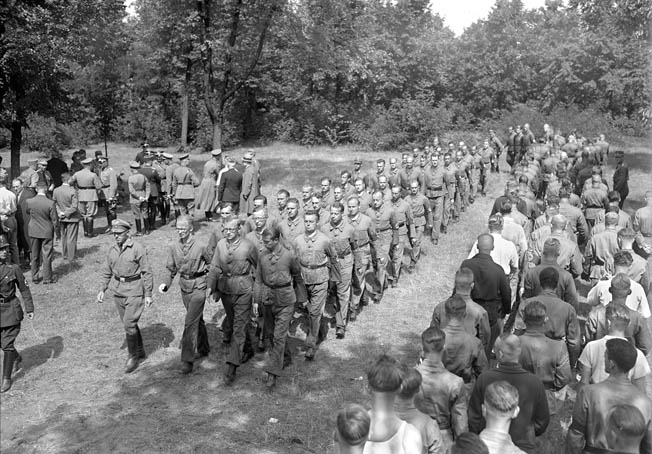
As the chief of OKW, Keitel structured the organization with an Economics Section under Maj. Gen. Georg Thomas, an Intelligence Section under Canaris, and an Operations Section led by Col. Gen. Alfred Jodl. As time passed, Keitel became devoted to Hitler. He supported the Führer with blind obedience and was quoted at Nuremberg as saying that the Führer Principle was paramount in “all areas and it is completely natural that it had a special application in reference to the military.”
Keitel did attempt to stand up to Hitler as plans for Operation Barbarossa, the invasion of the Soviet Union, were being formulated. He objected that the plan was too ambitious. Hitler was enraged. When Keitel offered to resign, Hitler declined, saying that only he, as supreme commander of the German armed forces, could decide when and if the head of OKW should step aside. From that time on, Keitel was a slavish servant to the Führer, so much so that some officers whispered a joke that he should be referred to as “Lakeitel” or “Lackey.”
Implementing Hitler’s Ruthless Orders
As World War II dragged on, Hitler exploited his relationship with Keitel, issuing orders such as the “Night and Fog” directive of December 1941, mandating that enemies of the Nazi state were to “disappear” without a trace, and decrees for the killing of prisoners and the immediate execution of Communist Party commissars if captured.
Weeks before the invasion of the Soviet Union, Hitler declared that the war in the East was to be one of annihilation. Keitel issued the Barbarossa Decree, sanctioning the ruthless suppression of Partisan activities and authorizing units of the Heer to use extreme measures in the process. Further, officers were directed to use harsh measures against the local populations when attacks against German forces occurred if the actual parties could not be located. Officers were given the power to execute hostile persons without trial or formal adherence to any law or legal process.
Heer officers were assured that they were authorized to exercise such authority without fear of prosecution for actions that would normally be violations of German law. Generals and senior commanders who protested summary executions and acts of brutality committed by both Army and Waffen SS (armed SS) personnel were often relieved of duty.
Each of these orders originated with Hitler. However, their implementation rested with Wilhelm Keitel, and the signatures on the actual paper orders belonged to Keitel as well.
While Keitel had considered himself a loyal officer of the Heer, he fatally linked that loyalty to Adolf Hitler. Therefore, he undermined the effectiveness of the Army general staff and OKH. Keitel left an indelible stain on the honor of the Heer and its officer corps. He was hanged as a war criminal.
Controlling the German Army Through the OKW
In the spring of 1940, the German armed forces, or Wehrmacht, moved against the Scandinavian countries of Norway and Denmark. Historically, such an operation would have been planned by the Army general staff and executed through OKH. However, Operation Weserübung (Weser Exercise) was controlled from the outset by OKW. Soon afterward, OKW issued orders to move an entire division of the Heer from Norway to Finland, establishing a new theater of war for the armed forces that was completely outside the control of the general staff or OKH.
When the invasion of the Soviet Union commenced on June 22, 1941, Hitler interfered with operations from the beginning. He accomplished this through orders issued by OKW. Just as he had done in France weeks earlier, ordering his ground troops to halt and allowing thousands of British and French soldiers to escape from Dunkirk, he grew restless as German forces neared the Soviet capital of Moscow.
Hitler diverted troops of Field Marshal Fedor von Bock’s Army Group Center to the north and south of the Soviet capital, rendering Bock’s planned armored offensive to capture Moscow impossible to execute and depriving Bock of the initiative to potentially win the war in the East.
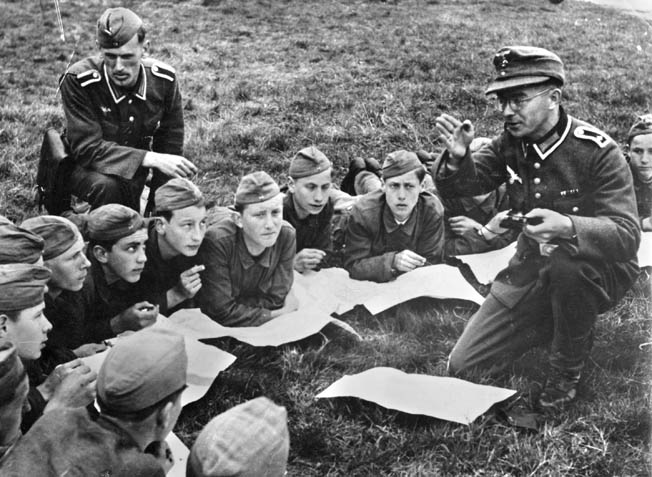
Oberfelshaber West
From the autumn of 1940 until the end of the war, the Feldheer (Field Army) in the West, also known as the Westheer, was under the control of Oberfelshaber West, or OB West, which answered directly to OKW. OB West was responsible for the implementation of orders issued by Hitler and transmitted through OKW. The OB West area of operations included the coastal defenses of the Atlantic Wall and the occupied territories of the Low Countries. At the end of the war, the remnants of OB West command were located in Bavaria.
Hitler’s continuing suspicions of the general staff and the high-ranking commanders whose careers were traced to the officer elite of the Junker class, is evidenced by the Führer’s replacement of the commander of OB West no fewer than six times. Field Marshal Gerd von Rundstedt was appointed and then sacked on three occasions. He commanded OB West from October 1940 to April 1941 and was replaced by Field Marshal Erwin von Witzleben from May 1941 to March 1942. Rundstedt was reinstated and commanded OB West from March 1942 to July 1944 and was followed by Field Marshal Günther von Kluge from early July to mid-August of that year. Field Marshal Walter Model held the post for two weeks in August and September 1944, and Rundstedt again commanded OB West from September 1944 until March 1945. The final commander of OB West was Field Marshal Albert Kesselring, who served for the remaining weeks of the war.
“Hitler’s distrust of the generals caused him to interfere extensively in the conduct of operations,” wrote author Walter Goerlitz in History of the German General Staff. “The policy … which left the subordinate commander freedom for individual decisions within the framework of general directives, and which had become an essential part of Germany’s traditional military method, was particularly in place in those great Russian spaces. Hitler, however, a victim of the illusion that he could move armies around as though they were battalions on parade, now adopted the practice of leaving commanders virtually no latitude at all. There was already a severe difference of opinion between General Staff and Supreme War Lord as to the real objectives of the campaign. Hitler … introduced into it a further element of disastrous uncertainty.”
Officers of the Heer
The German soldier was, without question, part of a great war machine, trained, organized, and intended for conquest. Quite a small percentage of those who wore the uniform of the Heer were officers.
While the Heer grew exponentially during the 1930s, the character of its officer corps evolved markedly. The tradition of Prussian and then German aristocratic senior commanders began to fade for several reasons, including Hitler’s mistrust of the elite old-line officers, the expansion itself which demanded larger numbers of officers to lead growing military units, and the indoctrination of Nazi ideology throughout the ranks of the Heer, which eventually subordinated itself to the Führer. As the war progressed, individuals who might not otherwise have been able to achieve officer rank did actually do so, either based on merit, heroism on the battlefield, or due to attrition as casualties mounted.
Officers of the Heer were grouped into three classifications based upon experience and particularly the circumstances under which the individual had risen to officer rank. Prior to the outbreak of World War II, the reserve officer corps consisted primarily of noncommissioned officers who had served with distinction and were commissioned as reserve officers when they were discharged from active duty or men who had been conscripted and carried out their duties capably during their first year of service, showing promise as officers. A sufficient level of education was required for the second group, and such qualified reservists were designated as officer cadets, who received extensive training as infantry platoon leaders during their second year of service. Reservists were required to participate in yearly training exercises.
The other two groups of officers were within the framework of the standing Heer or had retired from it. General staff corps officers included those who were considered capable of high command and were chosen for specialized training to fill such roles. The regular officers were active with the Heer and held various command and staff positions throughout the hierarchy. As the war progressed, the number of regular officers was increased via the recall of many who had retired prior to 1939 and the permanent commissioning of some noncommissioned officers promoted in the field.
The Wartime Officer Corps
The requirement for manpower led to conscripts being retained for service following the end of their initial required enlistment period. A few of these men volunteered or were recognized as having the necessary qualities to become reserve officers. These conscripts were trained as officers, received reserve commissions, and pledged to serve through the end of the war.
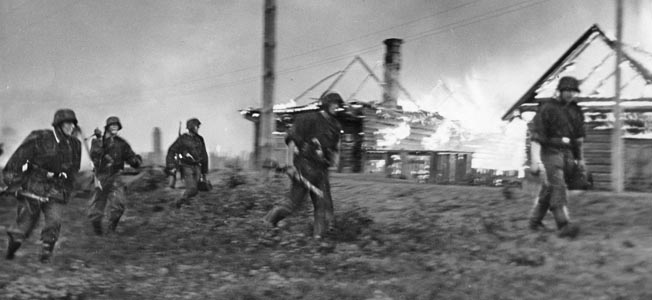
During wartime, soldiers were regularly promoted to officer rank following a few months of specific training based on their combat experience and leadership capabilities. The standard training period for officer candidates remained lengthy, up to 20 months. Some officer candidates received credit for active duty regardless of combat experience because of the increasing need for field officers as casualty rates climbed.
Four Sections of Rank
The officer corps of the Heer was divided into four sections based on rank, one consisting of junior officers such as lieutenants, another of all captains, and a third of field grade officers that included majors, lieutenant colonels, and colonels. The fourth group encompassed all general officers, who, along with lower ranking officers of the general staff, were distinguished easily by wide red stripes running the length of their uniform trousers.
Although the elite status of the German officer corps was eroded somewhat during the Nazi era, the prewar life of an officer included good pay, accommodations, and food. Officers were given a uniform allowance upon commissioning but afterward were required to purchase their own uniforms.
Offensive Actions and Leading From the Front
While wartime training periods were frequently shortened due to the need for officers in combat zones, the standard regular officer training regimen included 10 months of basic infantry and noncommissioned officer schooling under the direction of the Ersatzheer (Replacement Army), seven months in the field to include affiliation with an actively serving unit, training in an appropriate staff setting or combat arms school, and three months of advanced, specialized training in infantry, armor, artillery, or support branches. The training curriculum for reserve officer candidates was similar, although it involved more extensive supervision by the Ersatzheer.
Continually favoring offensive action, the training regimen of the Heer stressed the concept of leading from the front. In doing so, it paid a terrible price. By the end of World War II, at least 80 German generals had been killed in action, while dozens more had suffered wounds. From September 1939 through March 1942, more than 16,000 German officers died, the majority of them in action on the Eastern Front.
NCOs of the German Army
The noncommissioned officer was the backbone of the Army in the field and included career soldiers or those identified from the ranks of draftees who completed training and chose to apply for noncommissioned officer rank. The latter were designated as a reserve component to differentiate them from those who had chosen a military career rather than been conscripted. Divided into two groups, senior and junior, noncommissioned officers were distinguished as one or the other by the presence of a cord worn on the soldier’s sidearm. Junior noncommissioned officers did not wear cords.
Young men over 16 years of age were allowed to apply for noncommissioned officer training and to enter the Army at the age of 17, while those active soldiers who applied for noncommissioned officer training were required to have served at least a year from the date of their conscription. Service terms of four years and six months or of 12 years were initially available depending upon the age of the soldier, and training included four months of basic instruction followed by six months of specific training for infantry, artillery, armor, mountain troops, or other service.
Late in the war, the training regimen was modified, accelerating the basic period to take place within an active arm of the Heer rather than in a school setting. This was followed by five months as a squad commander or possibly a shorter period for other specialized assignments. Eventually, the exigencies of war reduced the training of some noncommissioned officers to less than three months, particularly for soldiers who had already served for long periods and experienced combat.
Foot Soldiers of the Heer
The Landser, or ordinary German foot soldier, was usually a conscript who received his notification to report for service from the local civil police organization. Volunteers did receive one major benefit, a choice of their branch of service. The conscript reported for registration and underwent two physical examinations to determine his fitness for service. Assignment to a specific unit or an order to return home until called to active duty then followed. The call-up was usually communicated by mail and included orders for reporting along with instructions for transportation.
During World War II, soldiers were assigned to a unit within the Ersatzheer before moving on to the Feldheer. Training consisted of 16 weeks of physical fitness and basic command and fire and maneuver techniques. The soldier became familiar with a variety of weapons and was knowledgeable in field operations up to the platoon level. Harsh training and discipline were hallmarks of the Heer during World War II, and both OKW and the general staff approved of strict rules and regulations. As the war progressed, such measures were considered vital to maintaining discipline in the ranks and ensuring that soldiers would obey orders. Offenses such as disobedience or desertion were punishable by immediate execution. At times even officers who were perceived to have failed in their duties were summarily shot.
The training was rigorous, continuing a proven track that had been effective during the years of the interwar Reichswehr and the clandestine buildup of the German military. Lengthy forced marches with full combat loads, live fire drills, and relentless rounds of conditioning exercises resulted in some soldiers dying from sheer exhaustion. Injuries were common. The typical day lasted from sunrise until well after dark. Although the Heer was one of the most highly mechanized armies in the world, only about 20 percent of it was motorized during World War II. Soldiers who entered the artillery or supply branches were trained to care for their unit’s horses.
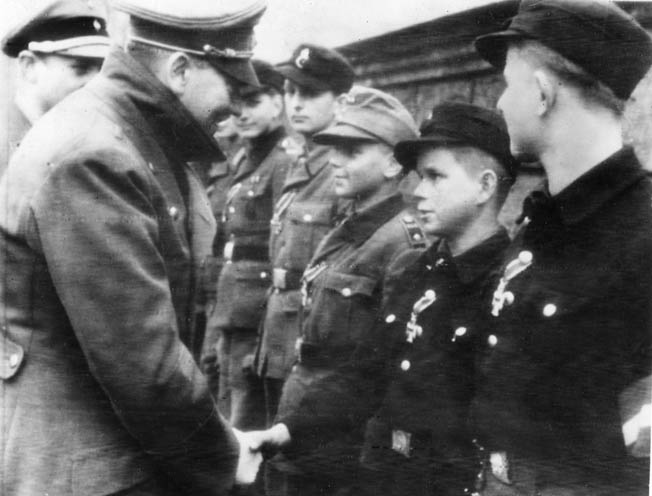
Infantry training was a requirement for all personnel regardless of intent to serve in other branches of the Heer. Basic artillery school, for example, included an additional three months of training once the compulsory infantry course was completed.
The Military Service Law
Published in 1945, the U.S. Army technical manual on the German military organization notes the opening clause of the Military Service Law issued by Hitler on May 21, 1935. “Military service is honorary service to the German people. Every German is liable to military service. In time of war, in addition to liability to military service, every German man and every German woman is liable to service to the Fatherland.”
From 1935 on, German men were subject to military service from their 18th birthday until the end of the month of March following their 45th birthday. Later, the age of conscription was extended from age 17 to 61, and during the last days of the Third Reich boys as young as 12 were defending the smoldering ruins of Berlin. Individuals deemed somewhat short of immediately fit for service were classified in one of several reserve components and subject to activation at any time.
Certain classes, such as Jews, were excluded from service. However, as the need for manpower increased the standards for physical fitness were lowered. Even convicts serving prison terms were pressed into the ranks, and convalescing soldiers who might have previously been furloughed were returned to their units.
10 Million Soldiers of the Heer
During the course of World War II, the strength of the Heer approached 10 million men at its peak. Between 1939 and 1945, the Heer suffered more than 4.2 million dead and nearly 400,000 taken prisoner, bearing by far the heaviest burden of the fight for Nazi Germany. The combat prowess of the German soldier in World War II was grudgingly acknowledged by his adversaries, and historians have noted that as a whole the Heer acquitted itself with tremendous courage in the face of a continually deteriorating strategic and tactical situation after 1942. Although some Heer units are known to have committed atrocities against prisoners and civilians, most common soldiers served with honor.
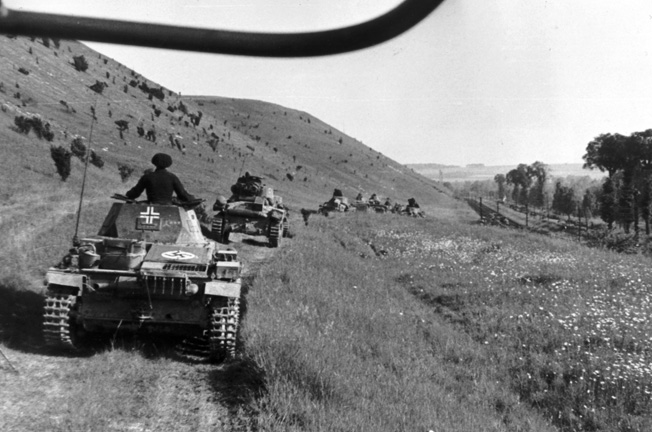
In his acclaimed book Frontsoldaten, Stephen G. Fritz comments, “As perpetrators, whether out of conviction or not, these common men existed as part of a great destructive machine, ready and willing to kill and destroy in order to achieve the goals of a murderous regime. In the role of victims, they lived daily with the physical hardships, the psychological burdens, and the often crushing anxieties of death and killing that constitute the everyday life of all combat soldiers.”
The Feldheer Fighting in Multiple Theaters
For all his ineptitude as a military strategist, particularly his strategic blunders committed in 1940 and later, Hitler was the catalyst for the growth and development of a fighting machine which was, up to that time, the most formidable in the world. The Heer was the premiere component of that machine, fighting across fronts that extended from the Caucasus to the desert of North Africa and from the English Channel to the Arctic Circle.
When the Feldheer deployed for combat, its strategic perspective was divided into theaters both large and small, created on the same basic principle of separating the frontline units and combat commands from support and administrative units to their rear. Division or corps formations were placed before the enemy on the strategic map with reserves drawn up to provide reinforcements. The frontline troops and reserves were grouped in an area designated as the combat zone. Directly behind, in the communications zone, were the rear areas of individual armies, while the rear area of an entire army group was still farther back. Collectively, the combat and communications zones were known as a theater of operations.
Behind the theater of operations was the occupied territory, or zone of military administration, which included ground under the control of the Heer ranging in size from a few square miles to an entire country. The German homeland was farthest from the combat front and divided into military districts that maintained direct communication with the Feldheer and the Ersatzheer to facilitate the transportation of supplies and troops to the front lines. The theater concept proved flexible and easily adapted to the size and strength of the forces available.
The organizational structure of the Feldheer changed continually during World War II as divisions, corps, and armies were realigned among commands, transferred from one operational area to another, or refitted as replacement troops to fill the depleted ranks of units that had taken combat losses. At times, some Heer units were so depleted that they retained their designation as divisions or regiments although their effective strength was far below the standard level.
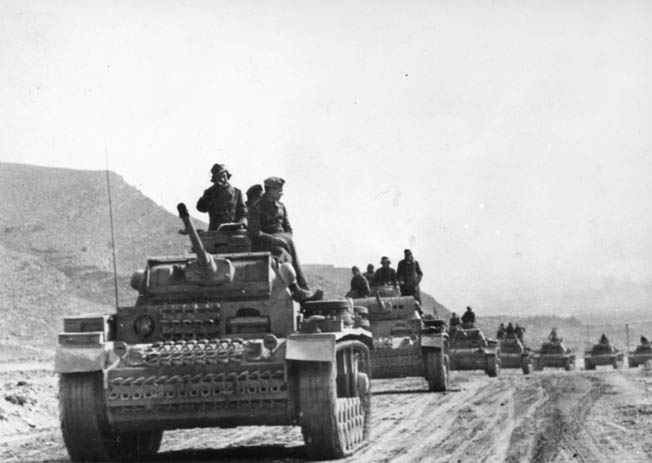
Heeresgruppen Nord
The largest operational unit within the Feldheer was the army group, which consisted of two or more armies with organic components of infantry, armor, artillery, and often a Luftwaffe air contingent operating cooperatively. The strength of an army group was usually several hundred thousand soldiers. Those that consisted entirely of German troops were known as Heeresgruppen.
One example of the evolving composition and deployment of Feldheer forces is Heeresgruppe Nord, Army Group North, which was nominally under the control of OKH throughout World War II. Army Group North was formed in September 1939 under the command of Field Marshal Fedor von Bock. During the invasion of Poland, its organic elements included the Third and Fourth Armies with the 10th Panzer Division and the 73rd, 206th, and 208th Infantry Divisions in reserve.
In October 1939, following the Polish campaign, Army Group North was transferred to the West, redesignated Army Group B, and included the Fourth and Sixth Armies. By the time the Heer executed Case Yellow, unleashing 136 divisions for the invasion of France and the Low Countries on May 10, 1940, Bock’s Army Group B included the three corps of General Georg von Kuchler’s Eighteenth Army and the six corps of the Sixth Army under General Walter von Reichenau. The total strength of Army Group B included 29 divisions in the spring and summer of 1940. Of these, 23 were infantry, three panzer, two motorized infantry, and one cavalry.
Army Group North on the Eastern Front
In preparation for the invasion of the Soviet Union, a new Army Group North was constituted on the Eastern Front and consisted largely of units drawn from Army Group C. Under Field Marshal Wilhelm Ritter von Leeb, Army Group North advanced on Leningrad and was poised to take the city when Hitler ordered the advance halted so that its civilian population could be starved into submission by siege. In the end, the 900-day siege of Leningrad was unsuccessful and tied down large numbers of German troops. During the opening months of Operation Barbarossa, this second incarnation of Army Group North included the Eighteenth Army, Sixteenth Army, Fourth Panzer Army, and specialized units.
Army Group North was deployed on the Eastern Front for the remainder of the war, and in October 1941 included the Sixteenth and Eighteenth Armies along with the troops of the Spanish Blue Division, Fascist soldiers from Franco’s Spain who volunteered to serve with the Feldheer. A year later, under the command of von Kuchler, Army Group North was augmented by the Eleventh Army. During seven months of combat along the Baltic in 1944, the army group was commanded by Field Marshal Walter Model, Col. Gen. Georg Lindemann, Col. Gen. Johannes Friessner, and Field Marshal Ferdinand Schörner.
In the waning months of the war, Army Group North operated in Prussia with the Sixteenth and Eighteenth Armies reinforced by various detachments and battle groups. Fighting in Latvia in January 1945, it was renamed Army Group Courland, while the remnants of the former Army Group Center was renamed as yet another Army Group North.
The Three Army Group Bs
Army Group B was actually the designation of three different formations during the war. In addition to Bock’s command of 300,000 troops that fought in Belgium and the Netherlands in May 1940, a second Army Group B was formed in the East prior to the Wehrmacht offensive against the Red Army in the summer of 1942. This command consisted primarily of troops of the former Army Group South and included the ill-fated Sixth Army under Field Marshal Friedrich von Paulus, which was annihilated by the Red Army during the six-month Battle of Stalingrad. After the Stalingrad debacle, this Army Group B was combined with Army Group Don to form another Army Group South.
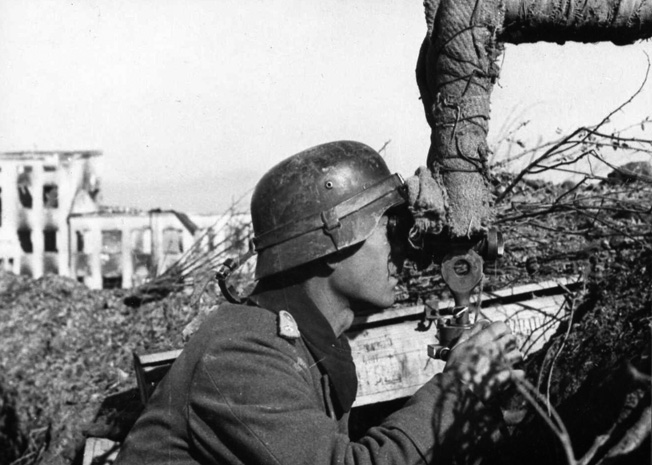
The third incarnation of Army Group B took shape in northern Italy in 1943 under Field Marshal Erwin Rommel. The army group was transferred to France after D-Day, and command passed to Field Marshal Günther von Kluge and later to Field Marshal Model. Elements of Army Group B participated in the fighting in Normandy, Operation Market-Garden, the Allied airborne and ground offensive in the Netherlands in the autumn of 1944, and the Ardennes offensive, which is popularly known as the Battle of the Bulge.
While in Italy, Army Group B included at various times the German Second Army, the Italian Eighth Army, the Hungarian Second Army, and for a time the II SS Panzer Corps. Its composition on the Western Front included Panzer Group West, the First Army, Seventh Army, Fifteenth Army, the Fifth and Sixth Panzer Armies, and the First Parachute Army.
The Armeegruppe
Axis army groups that included German formations along with those of other nations, particularly the Italian Army in North Africa and the Romanian and Hungarian Armies on the Eastern Front, were often designated as Armeegruppen. Prior to 1943, the term Armeegruppe was more loosely defined and included reinforced formations or even large groupings of particular divisions. Later, when Axis forces of more than one nation operated cooperatively, the headquarters of the German component of the Armeegruppe was usually in overall command.
Armies, Corps, and Divisions of the Heer
A standard army-sized unit within the Heer numbered from 60,000 to 100,000 troops formed in one or more corps and including attached specialized units. An army corps consisted of one or more divisions along with attached units, reserves, and any additional support troops assigned. Corps headquarters served as “bridge” command structure between the strategic direction of armies and the tactical deployment of smaller units such as divisions or battle groups. The corps generally consisted of 40,000 to 60,000 soldiers including both combat and support troops.
The composition of Feldheer divisions during World War II depended on their type and purpose. Infantry divisions were comprised of different units than panzer divisions. Therefore, an infantry division most often consisted of up to four regiments along with attached units totaling of 10,000 to 20,000 men. Its headquarters provided tactical field direction for fighting regiments under its command.
The 1st Infantry Division
Activated in October 1934, during the early phase of the Heer’s growth under the Nazi regime, the 1st Infantry Division traced its beginning to the prewar Reichswehr and was originally known by a series of euphemistic names to camouflage its true purpose as an infantry formation, which violated the terms of the Versailles Treaty. A “Wave One” unit, the 1st Division included soldiers who were called up in the first wave of German military conscription prior to World War II.
The 1st Division participated in the Polish campaign as a component of the XXVI Corps and Third Army commanded by General von Küchler. The division transferred to France briefly and then returned to the Eastern Front for the rest of the war. Participating in the advance of the Eighteenth Army on Leningrad, the division fought in the area of Lake Ladoga and transferred to the First Panzer Army in the winter of 1943. Later operating with the Third and Fourth Armies, the 1st Division fought the Soviet Red Army in the vicinity of Königsberg in East Prussia until the end of the war.
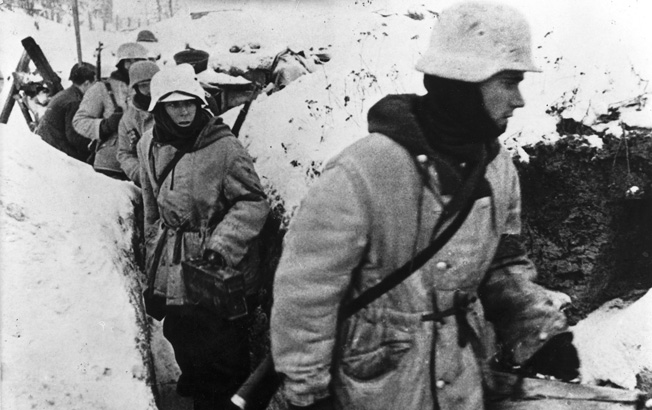
The exigencies of combat influenced the composition of the 1st Division significantly. During the Polish campaign, it consisted of three infantry regiments, the 1st, 22nd, and 43rd, an artillery regiment with an attached battalion, machine-gun, antitank, pioneer, reconnaissance, signals, and medical battalions. By 1944, the division included Füsilier Regiment 22, which combined the capabilities of heavy infantry and reconnaissance troops; Grenadier Regiments 22 and 43, comprised of ordinary foot soldiers; Artillery Regiment 1 with an additional artillery battalion; and various support formations. From its inception through the end of the war, the 1st Division was led by no fewer than 12 different commanders.
Organizing Regiments and Companies
Below the division level, the regiment consisted of 2,000 to 6,000 soldiers, who engaged in direct combat with the enemy and deployed organic units along with attached formations as necessary. At times, the regiment included independent battalions or abteilungen. In theory, the 500- to 1,000-man abteilung was the smallest unit in the Heer that was capable of sustained combat operations without the direct support of other units. An operational abteilung regularly included infantry, artillery, armor, and pioneer formations, along with heavy weapons support such as machine-gun and mortar units, to accomplish an assigned tactical mission.
The 100- to 200-man company served at the tactical level and usually included four or five platoons, which were the primary combat formations of the Heer infantry. Each platoon was initially divided into squads of 13 soldiers. Later, when the 13-man configuration proved unwieldy on the battlefield, the size of the squad was decreased to 10 men. Although Hitler controlled the highest levels of command through OKW, subordinate commanders in the field were often allowed considerable independence. Junior officers and noncommissioned officers of the Heer gained a reputation for independent combat initiative.
Kampfgruppen: Germany’s Combat Command Structure
Combat operations often involved the formation of self-contained units known as battle groups, or kampfgruppen. These were combinations of units that provided comprehensive ground capabilities and ranged in size from corps to battalion or company level. Each kampfgruppe usually included infantry, armor, artillery, and antitank elements along with support troops such as pioneers and medical detachments.
Formed in the field and comprised of the units at hand, the kampfgruppe was often a temporary organization that bore the name of its commanding officer and was ordered to carry out a specific mission. A standard formation of Heer tactical guidelines and field operations, the kampfgruppe was somewhat similar to the combat command structure employed by the U.S. Army during World War II.
The Kampfgruppe in Action
During the retreat of Axis forces across North Africa following their defeat at El Alamein in the autumn of 1942, German and Italian troops were pushed across hundreds of miles of desert. With Allied forces advancing from east and west, Axis troops under Generals Erwin Rommel and Hans-Jürgen von Arnim were in danger of being cut off from one another during their fighting withdrawal toward the Tunisian coast. Several kampfgruppe were dispatched to hold vital mountain passes against the advancing Allies.
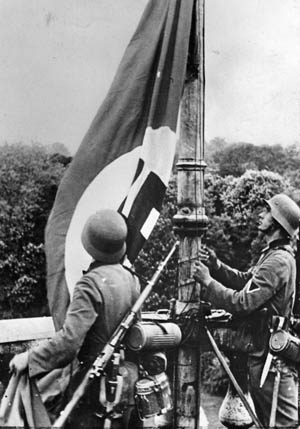
One such battle group was Kampfgruppe Fullriede, formed in February 1943 under the command of Lt. Col. Fritz Fullriede. Defending the Fondouk passes along a front of 65 kilometers, Fullriede had 12 infantry companies, nine German and three Italian, 14 Italian field guns, three small German artillery pieces, and the 334th Armored Car Battalion, which fielded several light antiaircraft guns and two 88mm cannons originally intended for antiaircraft use but deadly in an antitank role. Augmented by a platoon of special forces from the famed Brandenburg Regiment, Kampfgruppe Fullriede launched a successful counterattack against U.S. forces that had previously driven his forward elements from defensive positions and captured a nearby village.
Further reinforced by the 190th Reconnaissance Battalion, Fullriede deployed a pair of self-propelled 75mm guns and cleared another mountain pass. Holding these routes open for days with little replenishment of supplies or reinforcements, Kampfgruppe Fullriede was retired on April 9, 1943, after nearly two months of steady combat.
The combat formations of the Feldheer proved adept at swift movement and exploitation of breakthroughs in enemy lines during offensive operations, particularly the Blitzkrieg, which combined air, armor, infantry, and artillery in the swift conquest of Poland, vast territory of the Soviet Union, and much of Western Europe from 1939 to 1941.
Once on the defensive, the Feldheer was resilient, its tactical commanders resourceful, and its soldiers battle hardened and grimly determined to defend the Fatherland.
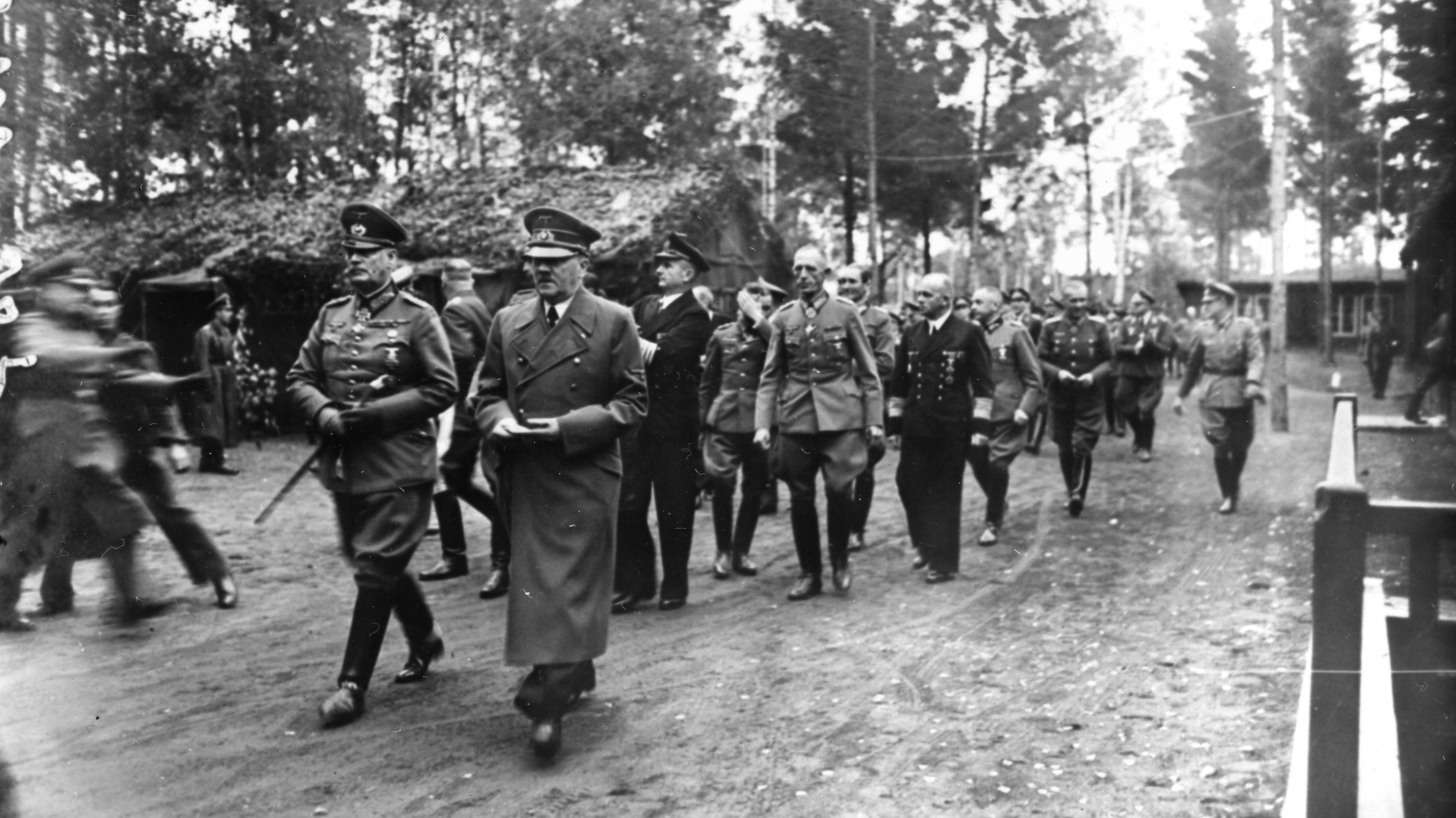
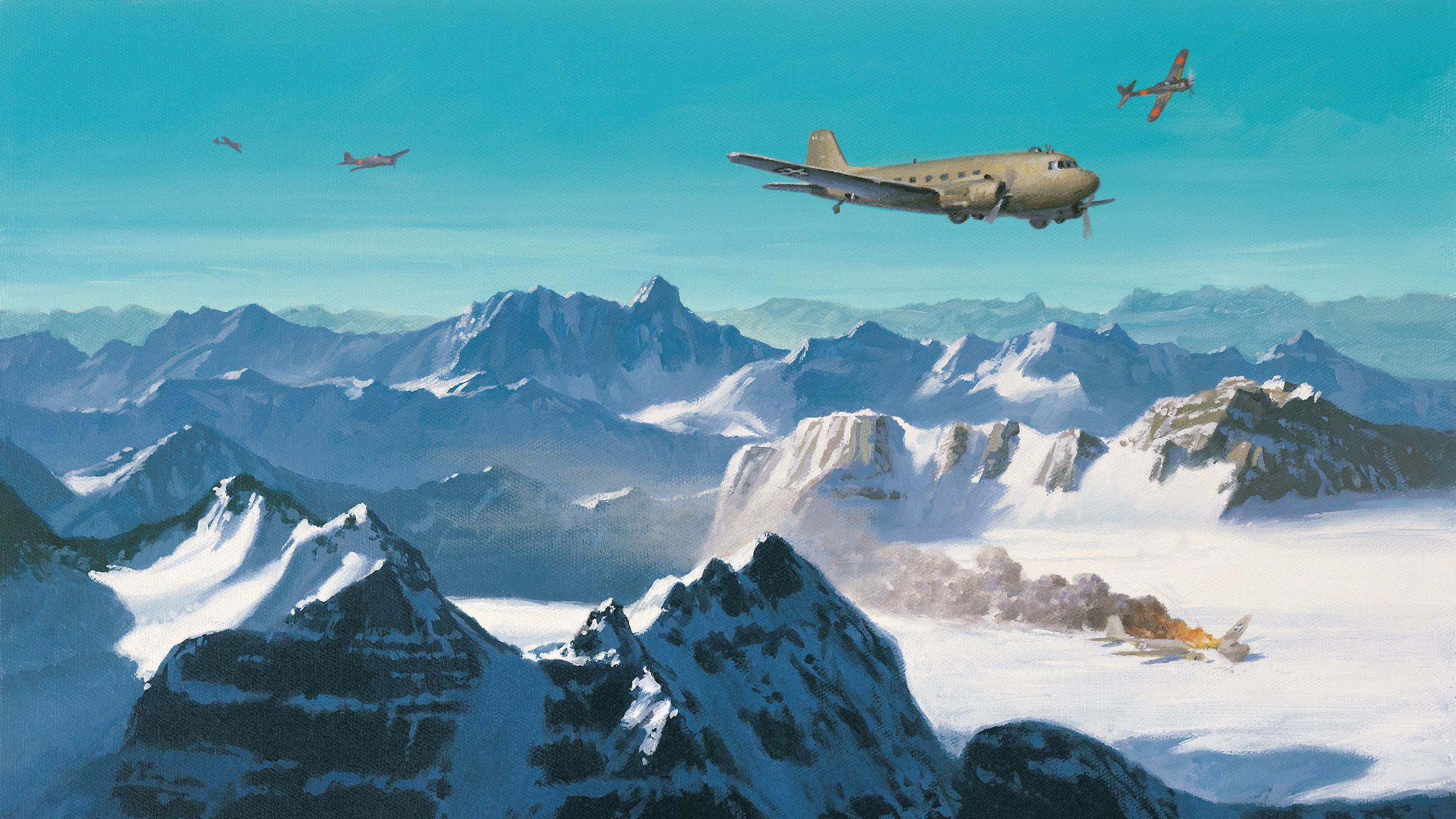
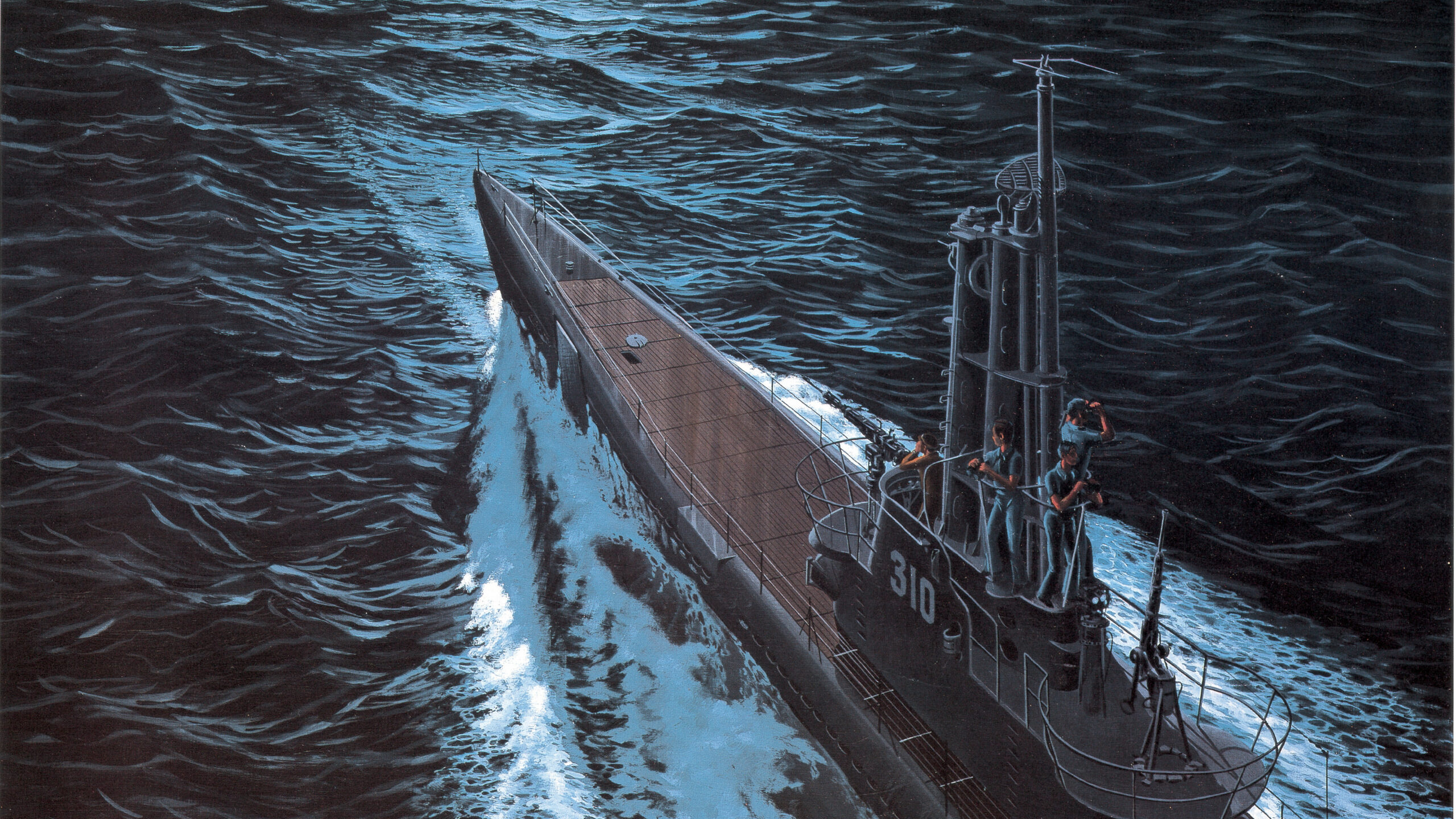

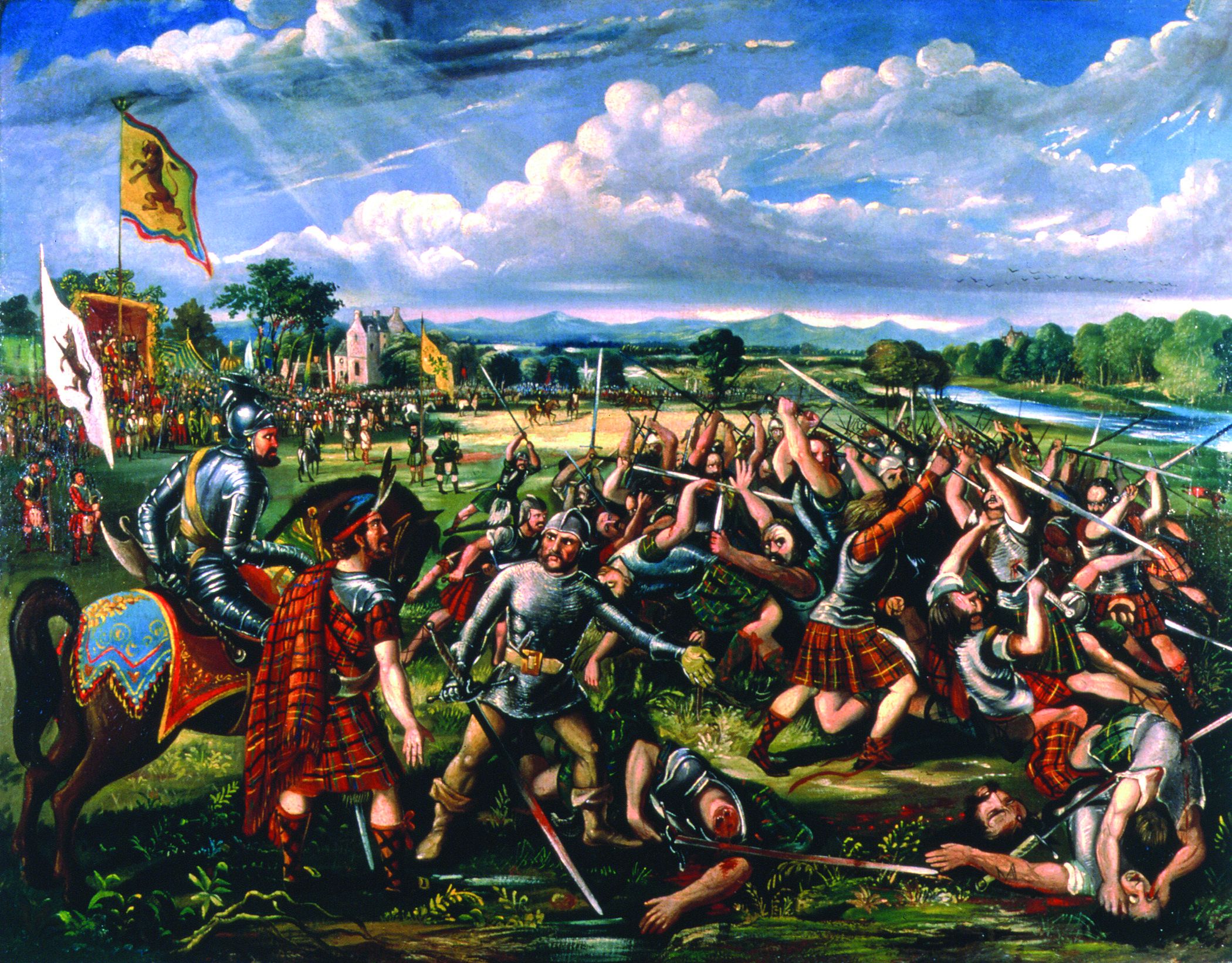
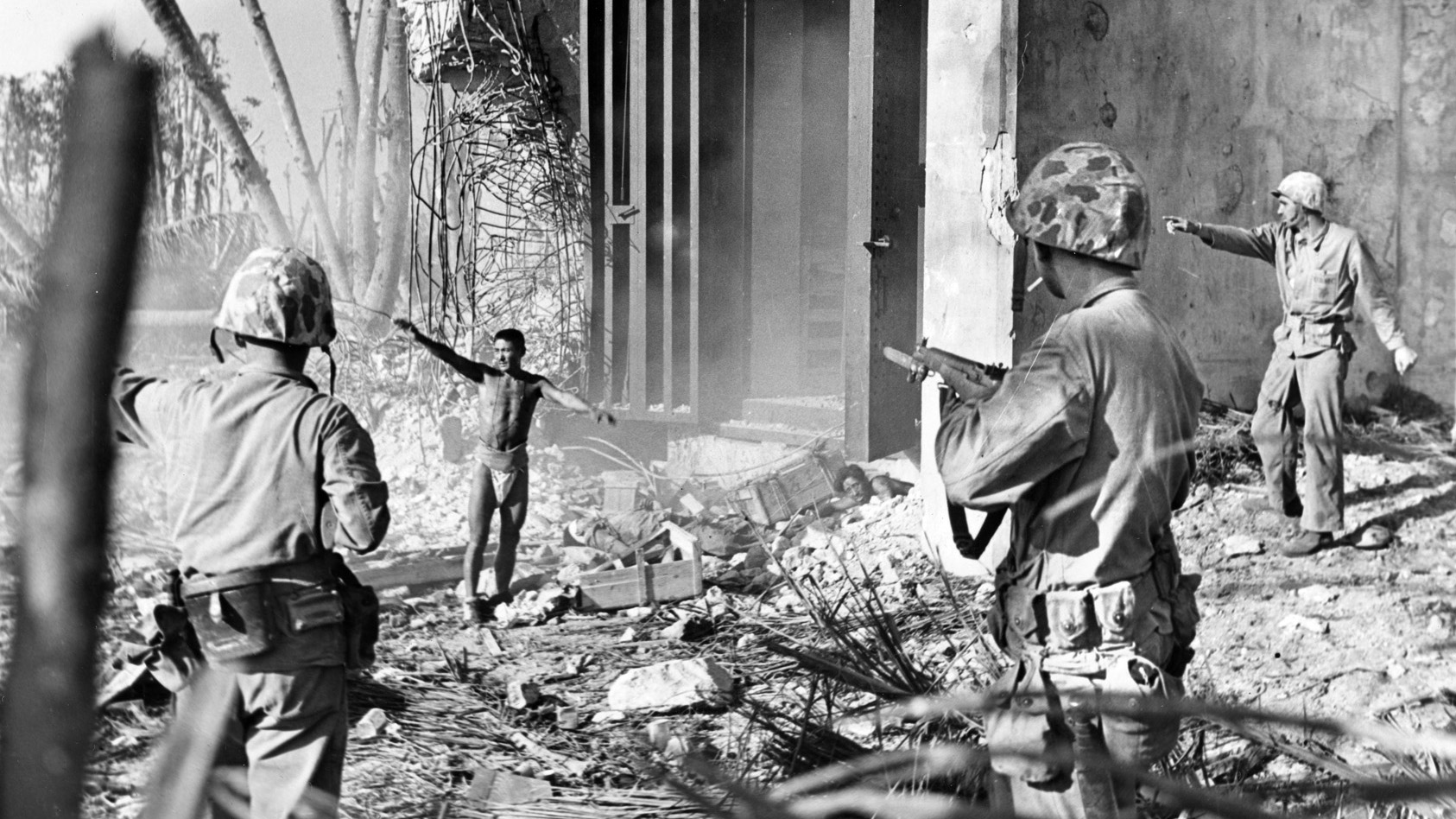
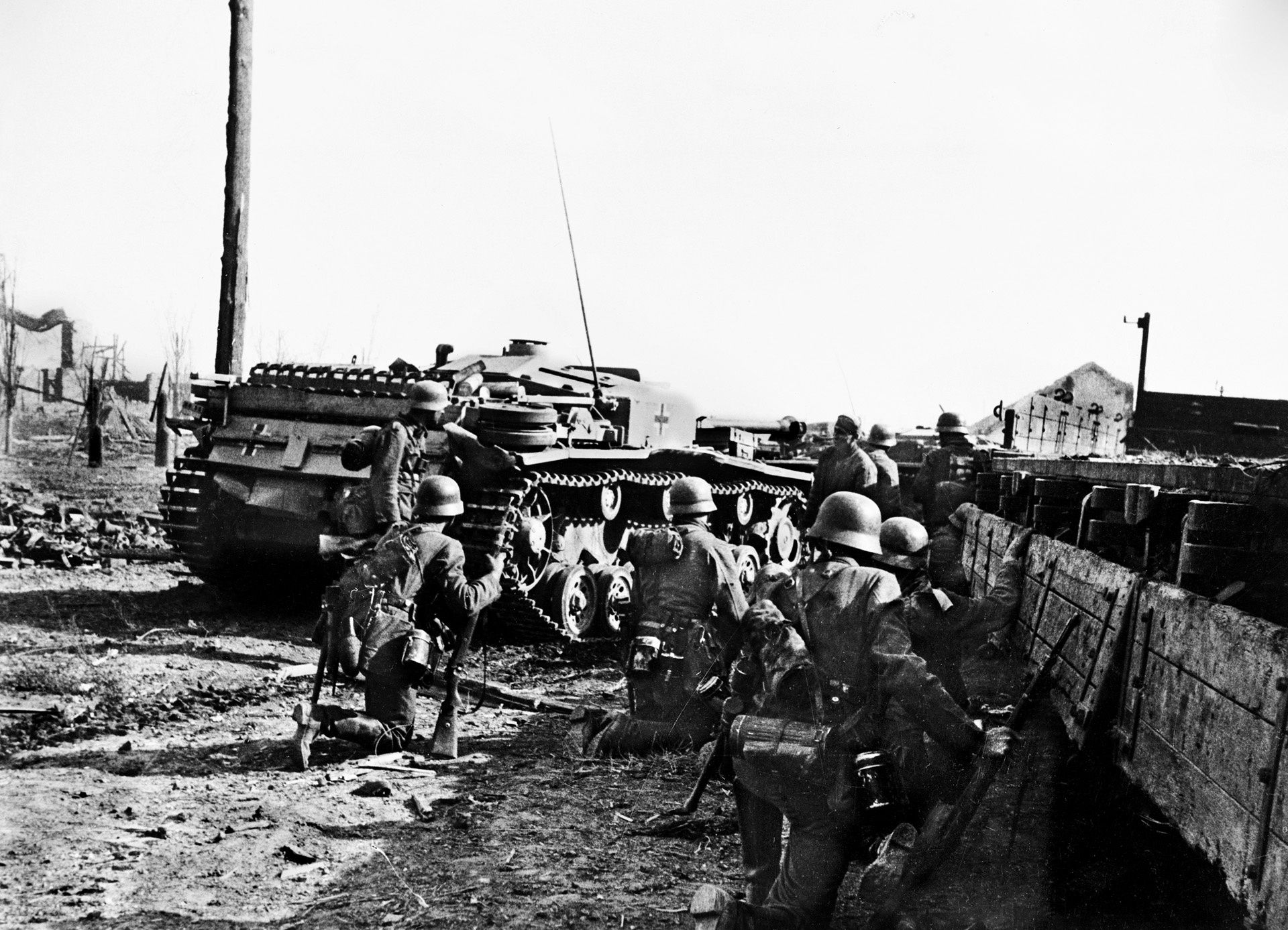
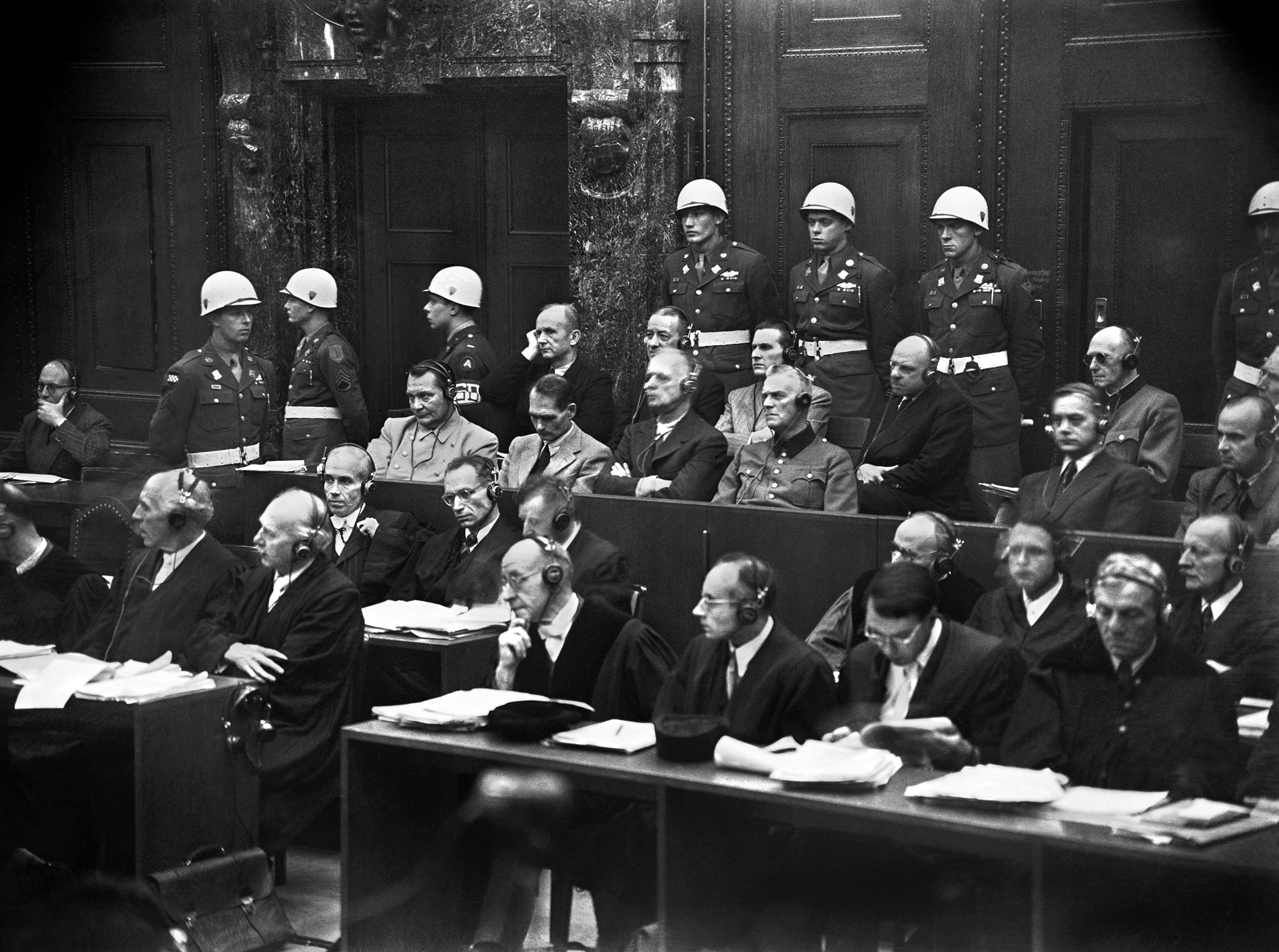
“With the end of World War I, the German Army had not been defeated in the field. Surrender had come due to depleted resources and war weariness at home”
The Germany Army on the Western Front were defeated in the First World War. The Kaiserschlacht (Kaiser Offensive/Operation Micheal) in the Spring of 1918 was a big gamble and a disaster for Germany. When the Allies fought back, the German Troops crumbled, many of them gave up. Germany was being pushed back along the Western Front. The German Army suffered numerous defeats from Late Spring to Early Fall on the Western Front. The Battle of Verdun was a huge defeat for The Germans, and a pyrrhic victory for the French.
Surrender actually was a cease fire, (The Armistice of 1918) had came because the Kaiser’s Government collapsed. The German Military panicked, and threw the disaster to Reichstag Politicians to deal with, who negotiated the Armistice,) The Versailles Peace Conference of 1919 was a fait accompli by the Allies, were the terms were dictated to the Germans..
Excellent presentation of Nazi structure and organization and accounts for much of their early success. I would also note that success owes a lot to the disunity and unpreparedness of the opposition countries pre-war who seemed to have learned little from WW I. The Czechs had a substantial arms industry. The French had competent aircraft though in short supply, a standing army, and a quality tank and tank corps led by the mercurial but competent de Gaulle. Churchill fought for British aircraft programs against opposition in his own party. Stalin eviscerated his own officer corps in the purges of 1931-33. Finally, Poland had defeated the Soviet army in 1920-21 and could have given a strong fight against the Germans had it maintained a professional standing army with decent equipment. It would have taken only a unified certainty of force by these countries to cause a full on revolt by the career German staff to force Hitler to back down or even be replaced.
I’ve seen estimates that @ 15000 members of German army were punished by execution in WWll. This number is adequate to inspire unquestioning discipline in any army.